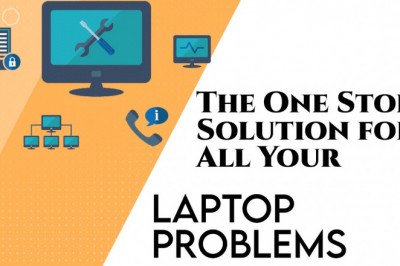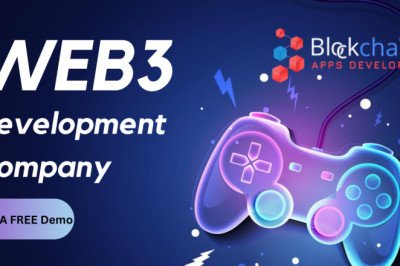views
What is Hybrid Cloud in IBM Power Systems?
Quisque actraqum nunc no dolor sit ametaugue dolor. Lorem ipsum dolor sit amet, consyect etur adipiscing elit.
What is Hybrid Cloud in IBM Power Systems?
By now, we’ve all heard of “The Cloud” only, and some of us may have heard of IBM Power Systems in the IBM Cloud. When “Cloud” was introduced, many experts said, “It’s nothing new in the cloud; it is just running something somewhere on someone else’s computer and accessing the data through the internet.”
The promise to move your workload to the Cloud is tempting; once you somehow move your application to the Cloud, someone else will manage it for you, and you will save on costs on your on-premises data center. However, moving workloads to the Cloud was not accessible due to the lack of warranty operations, pricing, cloud support, or a virtual machine with a selectable SLA in the Cloud.
But today’s cloud computing is new because IT organizations can now quickly move their workloads to the “Cloud. ” There are many clouds services providers, such as Google (GCP), Amazon (AWS), Microsoft (Azure), or IBM Cloud (formerly known as SoftLayer) and many others, that offer modern “cloud” capabilities such as:
All of this felt good for C-Suite because they believed they could reduce the size of their data center infrastructure, the complexity of operations, operating system, device management, and can define their service level agreements. The Cloud seemed to offer higher cost savings and lower risk, and their headaches were gone.
The reality today is that cloud technology still needs to make significant changes to meet the expectations of organizations. One survey suggested that 38% of those who moved their workloads to the Cloud found that cloud application is not capable of fulfilling their needs, and they had to switch back to on-premises solutions, but reverse migration is more expensive. Small businesses can run individual applications with, lower security risk, minor performance issues, and minimal capability requirements, and this is the tendency for customers to succeed.
However, large organizations with complex IT architectures and mission-critical applications did not find what they wanted. So, they had to go back. The survey also found that 38% of those who returned did so at a higher cost.
Later in this blog, we will discuss how technological advancement can help fix inefficiencies, making the Cloud more convenient for many businesses. Eventually, it’s called “application modernization.”
Suppose you are the owner of a large organization with mission-critical workloads. You like the idea of moving some management workload, risky operations, and expensive upgrades to the Cloud.
What do you do now?
Well, the final idea is a hybrid Cloud.
This may sound scary, but it means to use the Cloud for essential tasks and leave data center systems and staff to manage critical functions within the organizations whose needs can’t be fulfilled in the Cloud. Some system requirements, such as high-security standards, hardware data replication for HA / DR, high-security network bandwidth, and regulatory compliance, can be challenging to implement on the Cloud. However, not all application areas in all IT environments have these mission-critical requirements.
The common thing in these examples is that they are mostly used in large companies, are not mission-critical, use dynamic capabilities. The system resources used to meet needs are not used for a long duration. It should be an easy and successful way to access the Cloud. Moving an application segment to the Cloud as proof of concept is of great benefit in learning and testing the Cloud, and it reduces overall IT costs. It can increase dynamic usage with fewer security issues.
Today, IBM Power Systems are very popular and used in thousands of well-known companies we interact with every day. These companies include banks, medical institutions, large retail chains, transportation companies, etc. The organizations use IBM Power Systems for reliability, efficiency, safety, and demand management.
The IBM Power Systems are running on AIX and Linux and are a great success. Clients run 15 TB DB2, Oracle, SAP HANA, and EPIC databases and have extensive networks with very high bandwidth requirements that power systems can easily support. They have highly secure environments and HA / DR solutions using IBM Power HA system mirrors and use IBM’s leading technologies such as PowerVM, PowerVR, and PowerSC to improve their environments.
All these power system technologies are available in IBM Cloud Power VS. IBM Power VS may offer the same capabilities that power systems businesses use today. Still, they can also take advantage of cloud applications and not give up their on-premises abilities. IBM Cloud with Power Systems is the highest security rated Cloud and uses the best hardware security built into the industry. With Power VS, IBM Hybrid Cloud also offers capabilities not found in other clouds, such as mass data migration tools, Aspera for high-speed network data transfer (compressed and encrypted), and the ability to use OVA technology to capture and migrate VM workloads.
Customers can migrate to the IBM Hybrid Cloud where IBM Power Systems 922s and 980s live with IBM 9100 storage systems and are provided with AIX, IBMi, or Linux based on their custom applications and can replicate the on-premises environment. Yes, but how will it work? And HIPAA, PCI, GDPR, etc. What if similar standards are too strict for many other cloud providers today? On IBM Cloud Power VS, many of these compliance rules have already been standardized, and ISVs, such as SAP, have also certified the implementation of the IBM Cloud Power System.
Also, Hybrid Cloud is a better option as it saves you from the pain of migrating to a cloud environment when there is a risk of reversing (i.e., returning to premises). Start with Hybrid Cloud (PoC) for development/testing or HA and then expand. Moreover, follow a phased approach to selected applications while maintaining a critical workload in the workplace.
Consider moving additional components such as DR, data storage, and the IBM / HCL WebSphere application server interface to the Cloud and allowing them to connect to on-premises applications that require performance, security, and mobility.
ookies are used to provide visitors with relevant ads and marketing campaigns. These cookies track visitors across websites and collect information to provide customized ads. Others Others Other uncategorized cookies are those that are being analyzed and have not been classified into a category as yet. SAVE & ACCEPT document.addEventListener('wpcf7mailsent',function(event){location='https://www.integrativesystems.com/thank-you/';},false);
Source Link- https://www.integrativesystems.com/hybrid-cloud-ibm-power-systems/











